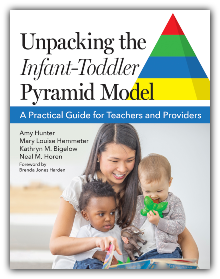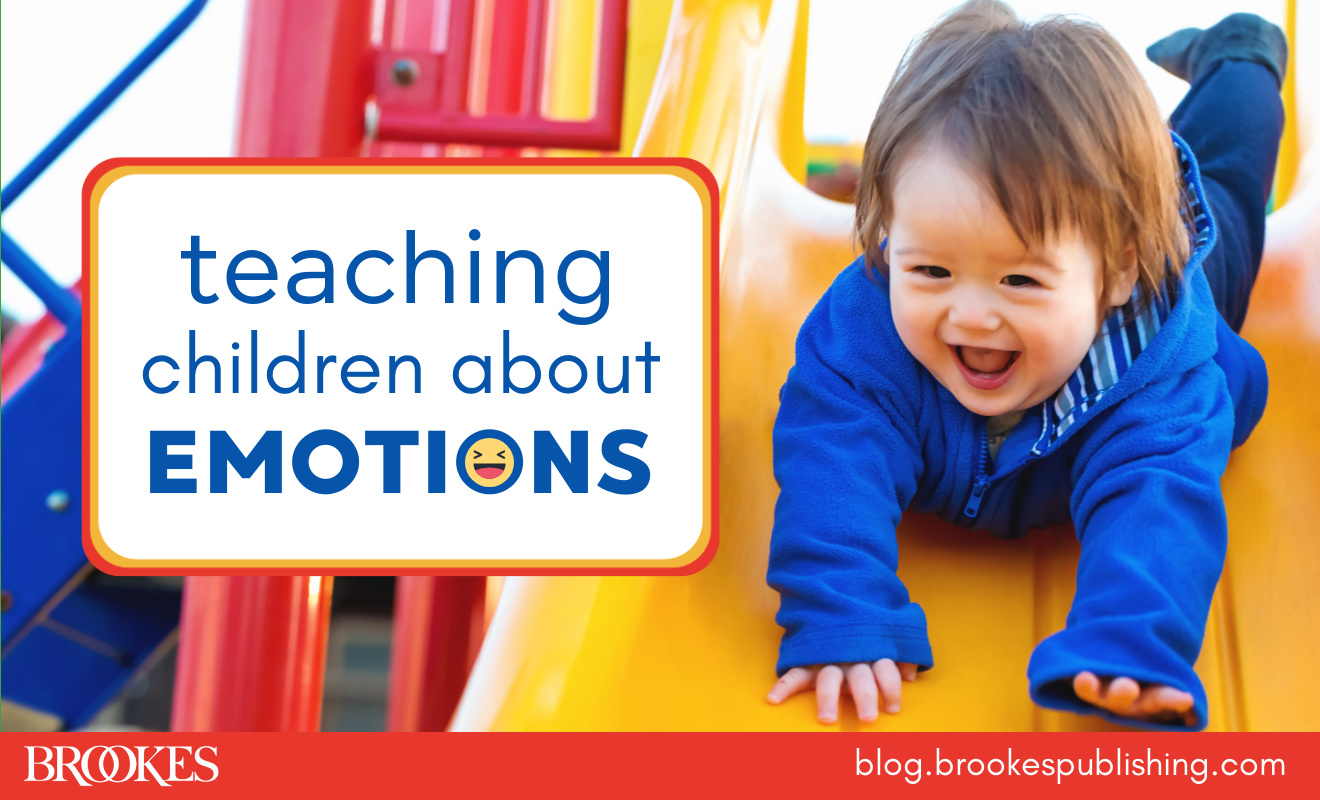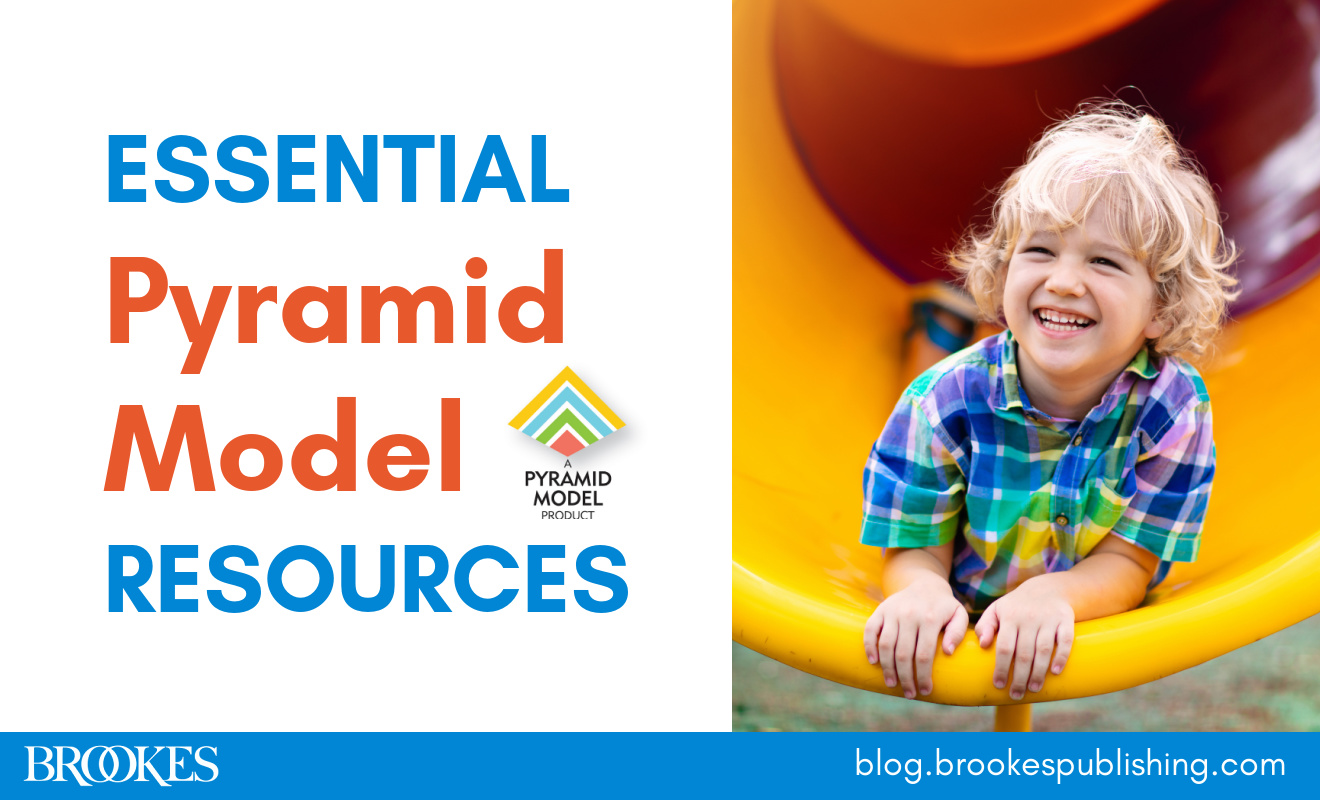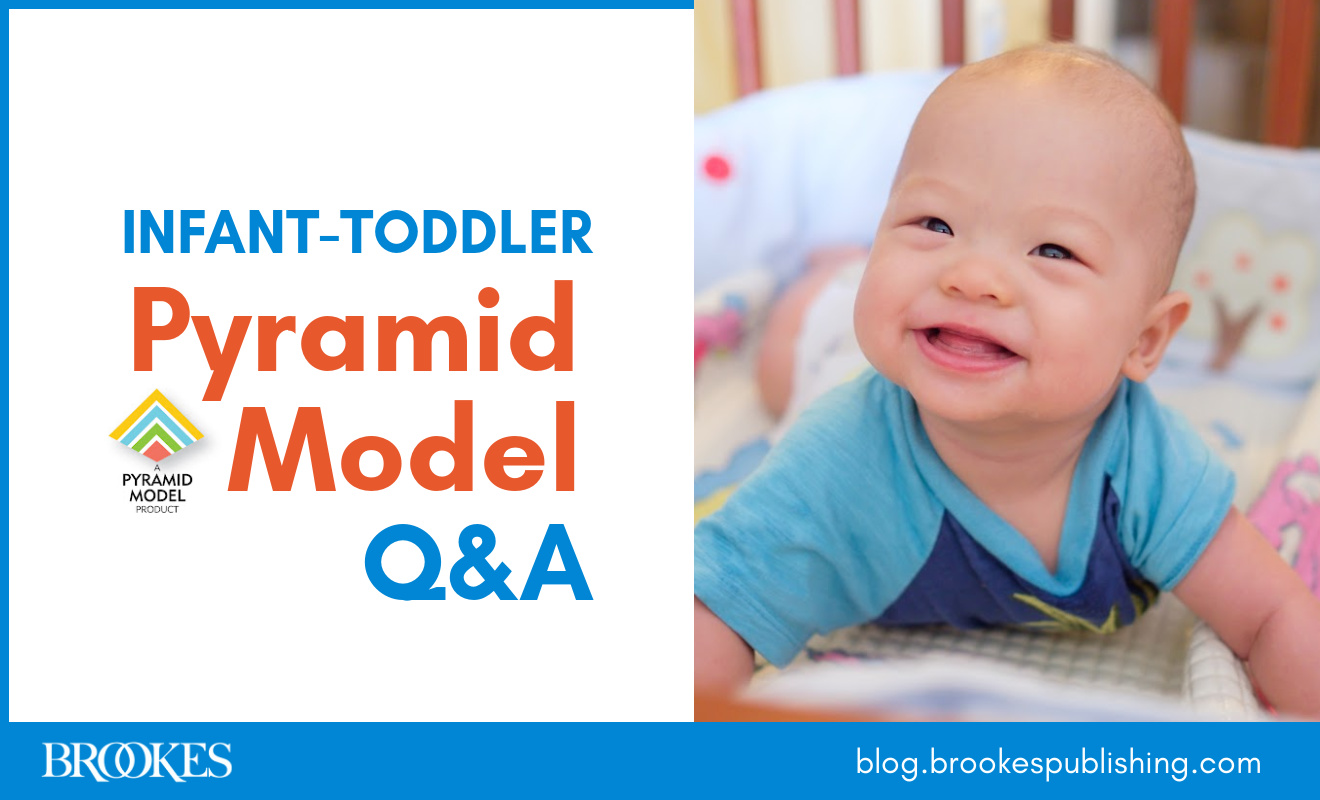 The widely used Pyramid Model Practices can help programs meet the unique needs of infants and toddlers and boost their social-emotional development in the critical first years of life. Excerpted and adapted from the new book Unpacking the Infant–Toddler Pyramid Model, today’s post answers five of the most commonly asked questions about use of the Pyramid Model with very young children.
The widely used Pyramid Model Practices can help programs meet the unique needs of infants and toddlers and boost their social-emotional development in the critical first years of life. Excerpted and adapted from the new book Unpacking the Infant–Toddler Pyramid Model, today’s post answers five of the most commonly asked questions about use of the Pyramid Model with very young children.
How are infant-toddler practices different than the prekindergarten (pre-K) practices?
Infants and toddlers are significantly different developmentally and physically in comparison to preschoolers. More brain development occurs in the first 3 years of life than at any other time in a child's life. Teaching infants and toddlers takes into consideration each child's unique development and this rapid rate of development.
Between birth and 3 years of age, a child progresses through three distinct stages of development: young infant, mobile or older infant, and toddler. The type of care and teaching infants receive changes as they grow and develop.
While emotional development and caregiver relationships are critical in teaching preschoolers, an infant's unique development dictates an increased focus on early caregiving relationships, which set the stage for the child's future relationships. Through their relationships with early caregivers, infants learn about the world around them, learn what to expect from caregivers, and learn about themselves. Infants observe their caregivers to understand how to feel, what to think, and how to behave. Nurturing and responsive care during caregiving routines is the basis of the infant-toddler curriculum.
Infant-toddler teachers also recognize that infants develop holistically, meaning that many areas (i.e., cognitive, communication, social-emotional, physical development) develop at the same time and are interconnected. For example, when an infant sits with a caregiver and peers on the floor putting a board book in their mouth, the infant is developing:
- social-emotional skills, by interacting with caregiver and peers
- fine motor skills, by manipulating the book
- gross motor skills, by sitting
- senses, by tasting and touching the book
- cognitive skills, from hearing the story in the book
- problem solving, by manipulating the book with the caregiver
Is the Pyramid Model developmentally appropriate for infants and toddlers?
Developers of the Pyramid Model made sure that it was developmentally appropriate for infants and toddlers and that it supports a variety of practices that are reflective of, and responsive to, the developmental, linguistic, and cultural backgrounds of each child and family. For example, there is an emphasis on responsive caregivers who read babies’ cues and respond to them accordingly and who support toddlers’ development of imitation skills, turn-taking, and engagement in social games.
Also, during the initial development of the Pyramid Model, it was important that practices could be provided in the settings where infants and toddlers typically spend their time, such as at child care programs, family child care homes, and home.
While Unpacking the Infant–Toddler Pyramid Model focuses on practices for classrooms or family child care homes, family members can also adapt and implement many of them at home.
What if I work with toddlers who are age 2 and 3? Which version of the practices do I use? What if I have a mixed-age program with children from 2 to 4 years old in the same room?
The Pyramid Model is designed for use with children birth through kindergarten, so the practices reflect a continuum of developmental levels. The book Unpacking the Pyramid Model: A Practical Guide for Preschool Teachers focuses on how to implement the practices in classrooms serving children ages 2 to 5 years.
While there is overlap, the new book focuses on the unique development needs of children under 3 years old. If you work with children across the developmental age ranges, you could reflect on the checklists in Unpacking the Infant–Toddler Pyramid Model as well as the pre-K book and consider what is most appropriate for the children in your classroom.
We work closely with our families. How does the Pyramid Model address family engagement?
One of the primary values and principles of the Pyramid Model is family engagement. Family members are a child’s first teachers, and the quality of the family-child relationship is one of the strongest predictors of child outcomes. Each chapter in Unpacking the Infant–Toddler Pyramid Model gives you ideas and strategies for learning from families and sharing information with them.
Teachers who implement the Pyramid Model:
- regularly exchange observations and information with families about each child’s unique temperament, development, culture, experiences, interests, and skills
- partner with each family to understand the meaning of their child’s behavior and to understand the impact of their unique culture and experiences on their child’s social-emotional development
- work closely with families to provide increased opportunities for children to learn in the context of everyday routines in their homes and communities, especially when children need more intensive intervention or instruction to address social, emotional, or behavioral needs
- form a collaborative team with families and other professionals to develop individualized, comprehensive interventions if an infant or toddler has persistent challenges
How can we determine how well we are implementing Pyramid Model practices with infants and toddlers?
The Teaching Pyramid Infant-Toddler Observation Scale (TPITOS) can be used to measure how well teachers are implementing Pyramid Model practices in infant and toddler classrooms. It measures how teachers are fostering responsive, nurturing relationships with children and promoting strong social-emotional development. The data collected using the TPITOS can be used by coaches and teachers to set goals and determine when those goals have been met.
For a comprehensive, step-by-step overview of the Pyramid Model and how to use it effectively with infants and toddlers from birth to three, see the book behind today’s blog post!

A Practical Guide for Teachers and Providers
By Amy Hunter, MSW, LICSW, Mary Louise Hemmeter, Ph.D., Kathryn M. Bigelow, Ph.D., & Neal M. Horen, Ph.D.
“This isn't a book to read once and put down. This one will soon become dog-eared! Teachers, professional development providers, program leaders, and others will repeatedly draw on the book's checklists, practice tips, resource links, and thought-provoking vignettes. Wherever you are in your professional journey, this book will help promote the social-emotional competence of all our smallest children and their families. It's a gem.”—Marilou Hyson, Ph.D., Consultant, Early Childhood Development and Education
Stay up to date on the latest posts, news, strategies, and more!
Sign up for one of our FREE newslettersMore posts like this

10 Effective Ways to Teach Young Children about Emotions
November 12, 2024
10 Quotes on Boosting Young Children’s Social-Emotional Development
August 6, 2024


Write a Comment
Your email address will not be published. Required fields are marked *
Post a Comment